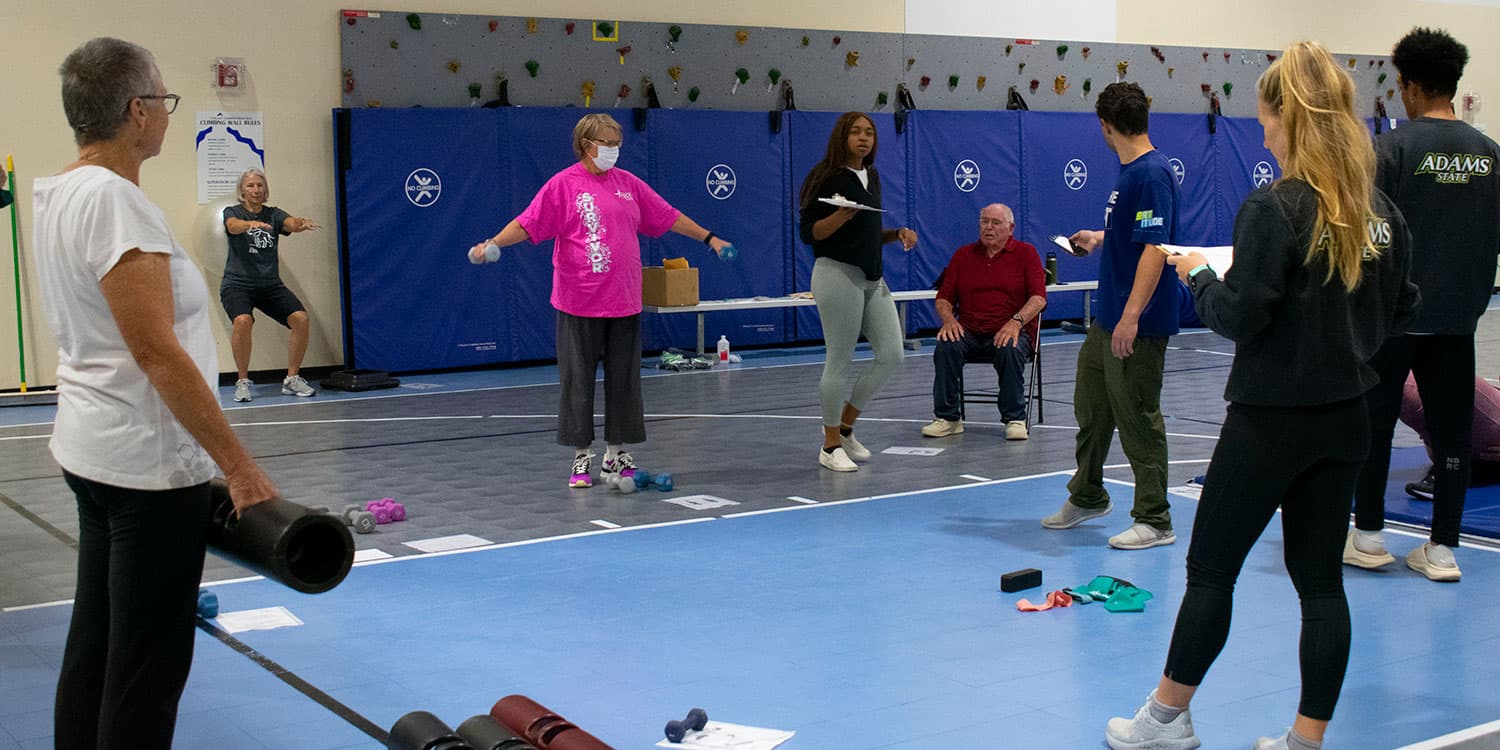It’s a brisk fall morning in the Alamosa Recreation Center and the atmosphere in the large multi-purpose room is one of determination and optimism as cancer survivors of various ages and abilities take part in the Adams State University Department of Kinesiology Larry Holder Exercise and Cancer Survivorship program.
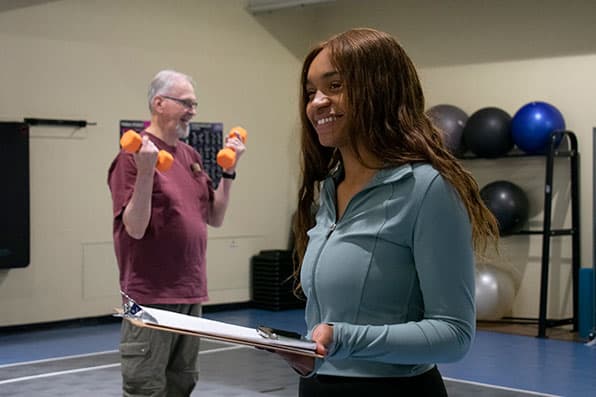
A whistle sounds and Inès Curti, Adams State kinesiology master’s student calls out for the participants to switch stations. A participant moves from mat stretches to trapping an exercise ball between her back and the wall in a bent knee squat; another puts down the free weights and moves to the step up platform; each of the 10-12 cancer survivors work out under the supervision of Adams State kinesiology students, directed by Curti.
“Working with people from different cultures and backgrounds and helping them improve their health, fitness, and wellness has been my favorite part of the study,” Curti said. “I am in awe of the strength of the survivors after what they have been through to show up here and have the strength to work out.”
The program began in 2018, when Danielle Smith, Class of 1996 and 2019, pursued the topic, “Investigating the Effects of a Supervised, Progressive, Eight-Week Physical Activity Program on Cancer Survivors’ Health, Fitness and Quality of Life” in her graduate thesis.
Margie Clemmer has been participating in the program from its inception. “I’ve enjoyed having my exercise structured. I feel stronger at the end of each program. It is also helpful to be around other cancer survivors, it acts as an informal support group.”
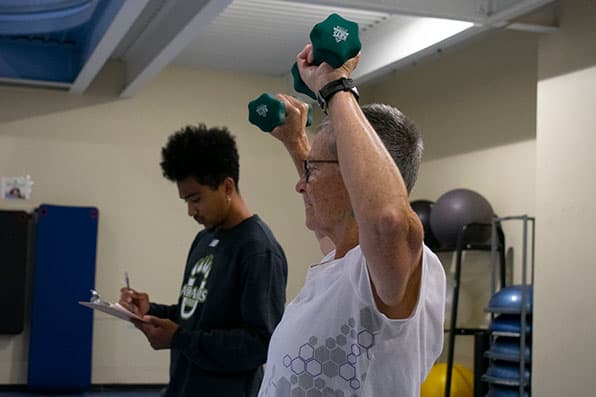 The compelling study was continued by the Kinesiology Department faculty, specifically Tracey Robinson, Ph.D., and Peggy Johnson, M.S. Each semester a graduate student is assigned to lead and supervise the sessions. The Colorado Cancer Coalition awarded the Kinesiology Department a two-year grant to continue research on the effects of exercise on cancer survivors. During the COVID pandemic, the program was on a hiatus and resumed in full last fall.
The compelling study was continued by the Kinesiology Department faculty, specifically Tracey Robinson, Ph.D., and Peggy Johnson, M.S. Each semester a graduate student is assigned to lead and supervise the sessions. The Colorado Cancer Coalition awarded the Kinesiology Department a two-year grant to continue research on the effects of exercise on cancer survivors. During the COVID pandemic, the program was on a hiatus and resumed in full last fall.
Stan and Julie Lentz signed up last spring and continued the program this fall. “It is an absolutely fantastic program,” Stan Lentz said. “The students are first-class, consummate professionals and nice people. They reaffirm my feeling about the future generations being able to run the show.”
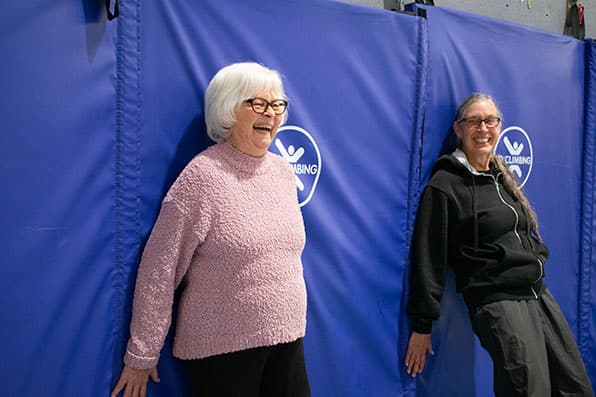
Throughout the sessions, undergraduate students aided in collecting heart rates and rate of perceived exertion (RPE) to measure the intensity of exercise at which participants are performing, how they feel, along with the progress of weights they are using over the course of the 10 weeks.
Undergraduate kinesiology senior Sebastian Ramirez said it was important to be comfortable in encouraging the participants to push through their comfort zone. “I am so appreciative to have this opportunity. The participants are so positive and it has been a fulfilling experience.”
Graduate students focused more on exercise science education for participants and provided individualized attention to correct workout form, or provide modifications for exercises difficult to perform or out of reach. Additionally, all together students perform exercise testing on this special population, collecting data to produce a fitness age and measure overall physical fitness at the beginning and at the end of the program.
Nico Alvarez, a first-year graduate student, appreciated interacting with that specific population. “We worked to adapt each exercise to each individual. They all had different needs.”
Alvarez and Ramirez went beyond the scheduled sessions in supporting the participants. “This summer Sebastian and Nico helped me walk 2.5 miles in support of cancer research. They walked on either side of me,” Suzanne Shriver said.
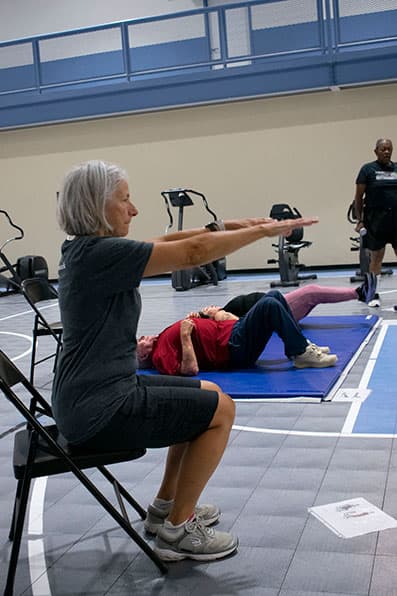 The Larry Holder Exercise and Cancer Survivorship program offered cancer survivors in the San Luis Valley the opportunity to participate in an individualized exercise program. Participants took part in a group setting three times per week for 10 weeks. The exercise sessions consisted of a warm-up; interval resistance training, with an emphasis on upper body, lower body, core strength, agility and balance; followed by cardio training and finally a cool-down with dynamic stretches.
The Larry Holder Exercise and Cancer Survivorship program offered cancer survivors in the San Luis Valley the opportunity to participate in an individualized exercise program. Participants took part in a group setting three times per week for 10 weeks. The exercise sessions consisted of a warm-up; interval resistance training, with an emphasis on upper body, lower body, core strength, agility and balance; followed by cardio training and finally a cool-down with dynamic stretches.
“With three sessions being performed each week, participants totaled the recommended 150 minutes of moderate physical activity per week,” Curti added. “The exercise intensity progressively increased over the ten weeks which promoted muscle growth and endurance.”
At the end of the study, the group results were calculated and the groups compared for changes in fitness and overall health. Kinesiology undergraduate and graduate students also helped with post-program evaluations. Gilbert Benton, a senior sports psychology major, said: “It is a definite plus to have this experience for my career path. Watching the cancer and exercise study participants progress has been an inspiration.”
Every participant volunteer took part in the exercise program and were provided common nutritional supplements.
The program was funded through a two-year grant from the Colorado Cancer Coalition and the Adams State Kinesiology Department with support from the SLV Health Foundation, including the Larry Holder Memorial Golf Tournament. The study will continue during spring 2023 starting in mid-January with local funding support.


